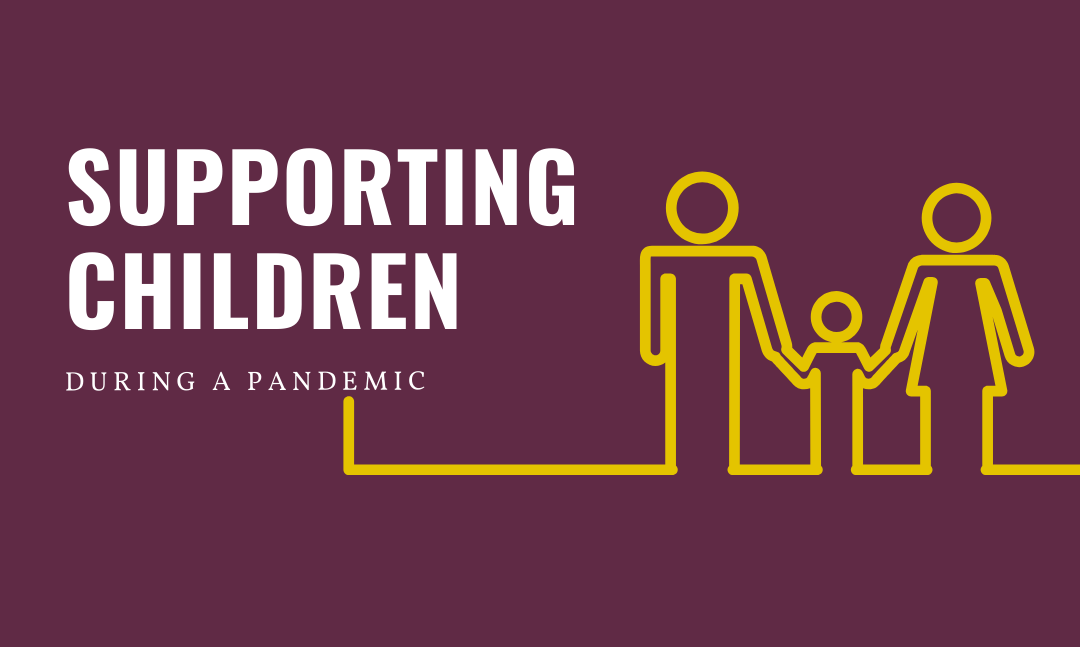“The child is capable of developing and giving us tangible proof of the possibility of a better humanity. He has shown us the true process of construction of the human being. We have seen children totally change as they acquire a love for things and as their sense of order, discipline, and self-control develops within them… The child is both a hope and a promise for mankind.”
Dr. Maria Montessori | Education and Peace
We live in a time where uncertainty is the only thing of which we’re certain. And guiding children through a time we’re struggling to navigate as adults leaves us with complex and conflicting emotions, beliefs and actions. But I want to start by assuring you – children are resilient. They learn through seeing and doing, and that process cannot be stopped. Children learn, grow and develop despite of culture, availability of supplies, disaster and other factors. And we will learn through this process together.
Start by supporting your children emotionally. Their age will shape their understanding of loss or change, so guide them through that process carefully. Just as some days are easier for you than others, your children will navigate the full range of their emotions. Validate their feelings, and draw connections when you feel similar. Encourage them to engage in things that bring them joy and remind them that our situation now is not our situation forever. Here are a few recommendations to create an emotionally supportive home.
Acts like journaling, drawing, songwriting and reading can be especially helpful for children to navigate our current conditions. Encourage children to engage with creative practices as they’re comfortable. Recently, Jon Bon Jovi virtually visited a classroom of kindergarten students, validating their journal entries and putting them to song. You can practice the same concept at home!
Supporting your children physically is important as well. Spend time with your children in the kitchen talking about foods that help you grow and make you strong (like nutrient rich fruits, vegetables and meats), and foods that are really yummy and fun to eat sometimes (like desserts). You can explain how you prepare their meals and involve them in the process. These conversations and integrations into regular practices are educational opportunities! You can help your younger children develop their fine motor skills by giving them developmentally appropriate responsibilities – like scooping and pouring ingredients. Older children can learn how to read nutritional labels and can compare and contrast the components of foods in your pantry.
Spending time outdoors is important to the Montessori Method, and it is still safe to play in your yard as a family unit! When the weather is nice, spend time engaging in exercise – like playing tag, practicing skipping or engaging in imaginative play. This is also supporting educational development while showing children that it is important to stay active.
Here’s what I haven’t mentioned yet – how to provide a school-like experience at home. It’s not possible to replicate a classroom experience at home for your children, and you shouldn’t feel pressure to do so. Rather, engage with your children and their school as fully as you’re able, and seek to integrate your children in lessons around your home. While pulling weeds, talk about the plants in your garden and how they flower in different seasons. While cleaning, talk about why you can’t mix certain cleaners, and why some cleaners perform different tasks than others. Allow your child to add ingredients to your mixing pot and talk about how the mixture changes color and consistency with each ingredient. Each of these represents a learning opportunity – one that you’re fully qualified and capable to deliver. When you remove the pressure to be a teacher and shift your mindset toward being a parent, your children will continue to learn and follow your lead.

